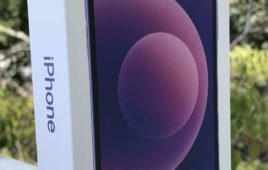Seen a good movie lately? Or read a book that you just couldn’t put down? Maybe you’re a devout TV watcher? Notice I didn’t say couch potato. Chances are you’ll answer yes to one or all of these questions.
 |
| Wilkey: Entertainment industry missing the boat without LBS. |
The entertainment industry (content producers and distributors) works hard to get our attention by creating memorable characters and settings. As consumers, we can’t seem to get enough of it and, presuming we don’t get all of our media from a file-sharing site, we are willing to pay for great content, either directly – by going to a movie, buying a book, ordering premium cable channels, or indirectly – by purchasing fine products that are advertised during the programs we watch.
Many of you may have already jumped to some conclusion about how the setup above ties to wireless. There are probably several ways this article could go, but since I’m driving I get to choose. In my opinion, the entertainment industry is in the slow lane when it comes to leveraging location-based services (LBS). For a large amount of the content that gets produced, the settings are real. The content is inherently location-centric. And consumers often want more information about the characters, the setting, the lifestyle, the home phone number and address of the actors, (now that’s just stalking).
We want to live the movie, the book, the HBO blockbuster series de jour. Consumers are not getting a complete experience; content producers are missing out on brand extension, customer touch points and revenue; and the wireless ecosystem is footing the LBS-awareness bill by themselves.
There are many examples that could illustrate this point. Let’s choose one to analyze: the movie “Sideways,” the Fox Searchlight Pictures sleeper that won several awards, and cemented Paul Giamatti’s leading role status and created a frenzy for Pinot Noir.
The movie is about a wine tour. OK, there’s some character development or something, but the effect it had on viewers is that they wanted to experience the lush green hills, pastel skies and smashed, fermented grapes of Santa Barbara for themselves. Tourism boomed. Local tour companies and businesses scrambled to fill the demand. In fact, how many devotees head to New York and want to find the Hello Deli of Letterman fame or walk in the footsteps of “Sex and the City’s” Carrie and pals? Or to Savannah because of John Berendt’s “Midnight in the Garden of Good and Evil?”
Think about how many of those tourists had a cell phone in hand, and probably a churro in the other. Now continue down the list of places you thought you’d like to visit after connecting with a character or setting, and think about the likelihood of having your cell phone with you as well.
Tours exist for all of the above now, mainly in the form of printed maps or given by local tour guides. But most content producers are losing a key merchandising opportunity by not proactively integrating Internet maps and wireless LBS into their marketing and promotion. There are a few exceptions, like Travel Channel Media, (Travel Channel Go application), HBO, (partnership with Pelago for its Entourage series) and Bravo, (partnership with Socialight for its Project Runway series). In the past, infrastructure and technology availability were serious roadblocks, but those hurdles are mostly gone and today the path is wide open for this type of innovative marketing.
Nextel launched the first GPS-enabled phones and started rolling out third-party enterprise and consumer applications more than 5 years ago. Fast forward to today and now all major carriers have the infrastructure, and are actively marketing and selling LBS, which account for a big chunk of data revenue. For the past several months more than 50% of handsets sold in North America are GPS-enabled, a number that is only going up as device manufacturers such as Apple, Google, (soon to launch), Nokia and RIM include mapping as a core functionality.
While basic map view, local search and navigation are the most used services today, social networking, shopping and other LBS apps are gaining subscribers. With Apple’s App Store making it easy for more niche applications to get into consumers hands, look for the launch of many more app stores hoping to replicate Apple’s success.
The infamous hockey stick growth curve has been predicted for LBS for the last 5 years. I think most in the industry would agree that in 2008 we’ve finally seen significant growth. But even with the broad availability of LBS – many applications free to consumers – and the amount of advertising dollars being spent by carriers, still only a low double-digit percentage of wireless subscribers are even aware of or looking at maps on their phone on a monthly basis. Most industry experts, analysts and others expect location services to be ubiquitous at some point in the future, but how long it takes will depend on compelling apps and consumer awareness.
The entertainment industry specifically has a real opportunity to benefit from the brand and revenue extension LBS can provide, while at the same time fueling awareness and demand for LBS in general. Certainly the infusion of $1 billion (pinky finger to your lips) in marketing would help LBS growth. If the entertainment industry marketing machine can get millions of consumers to go to a movie like “Norbit,” just think of what it could do for LBS.
Wilkey is senior manager of wireless markets for Tele Atlas.




